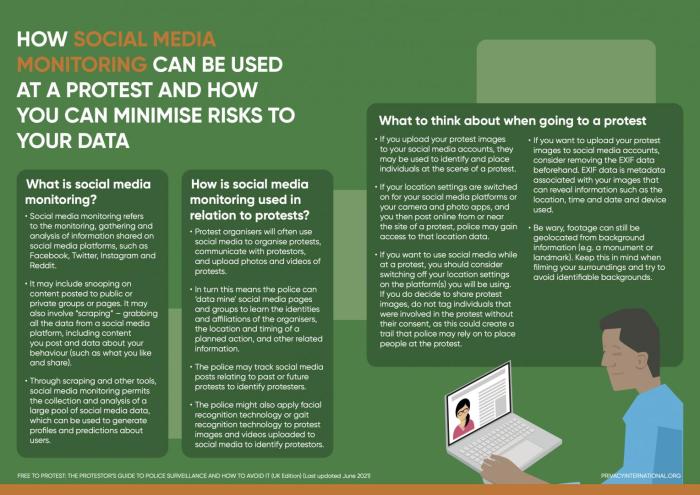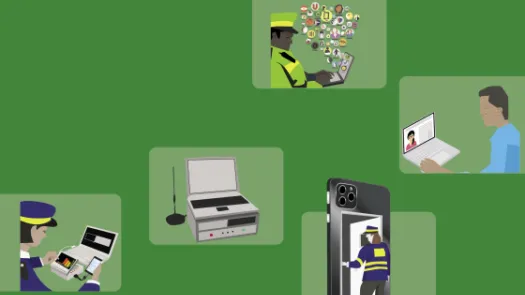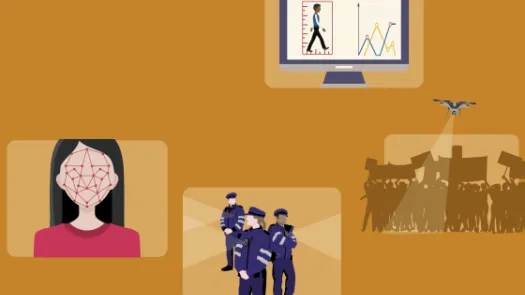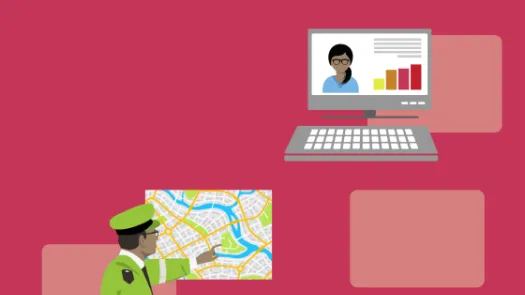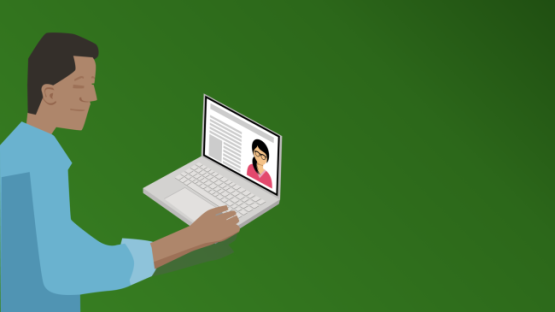
How social media monitoring can be used at a protest
A brief guide to how social media monitoring can be used at a protest, and how you can minimise risks to your data (UK edition)
Explainer
Post date
6th May 2021
Key points
- Social media monitoring refers to the monitoring, gathering and analysis of information shared on social media platforms, such as Facebook, Twitter, Instagram and Reddit.
- Protest organisers will often use social media to organise protests, communicate with protestors, and upload photos and videos of protests.
- The police can ‘data mine’ social media pages and groups to learn the identities and affiliations of the organisers, the location and timing of a planned action, and other related information.
- If you want to use social media while at a protest, you should consider switching off your location settings on the platform(s) you will be using.
- There are other steps you can take too, but none are perfect solutions…

What is social media monitoring?
- Social media monitoring refers to the monitoring, gathering and analysis of information shared on social media platforms, such as Facebook, Twitter, Instagram and Reddit.
- It may include snooping on content posted to public or private groups or pages. It may also involve “scraping” – grabbing all the data from a social media platform, including content you post and data about your behaviour (such as what you like and share).
- Through scraping and other tools, social media monitoring permits the collection and analysis of a large pool of social media data, which can be used to generate profiles and predictions about users.
How is social media monitoring used in relation to protests?
- Protest organisers will often use social media to organise protests, communicate with protestors, and upload photos and videos of protests.
- In turn this means the police can ‘data mine’ social media pages and groups to learn the identities and affiliations of the organisers, the location and timing of a planned action, and other related information.
- The police may track social media posts relating to past or future protests to identify protesters.
- The police might also apply facial recognition technology or gait recognition technology to protest images and videos uploaded to social media to identify protestors.
What to think about when going to a protest
- If you upload your protest images to your social media accounts, they may be used to identify and place individuals at the scene of a protest.
- If your location settings are switched on for your social media platforms or your camera and photo apps, and you then post online from or near the site of a protest, police may gain access to that location data.
- If you want to use social media while at a protest, you should consider switching off your location settings on the platform(s) you will be using. If you do decide to share protest images, do not tag individuals that were involved in the protest without their consent, as this could create a trail that police may rely on to place people at the protest.
- If you want to upload your protest images to social media accounts, consider removing the EXIF data beforehand. EXIF data is metadata associated with your images that can reveal information such as the location, time and date and device used.
- Be wary, footage can still be geolocated from background information (e.g. a monument or landmark). Keep this in mind when filming your surroundings and try to avoid identifiable backgrounds.
You can download this guide as a jpeg by saving the image below, or by downloading the pdf version in 'Attachments'.
Our campaign
Our fight
Learn more
Target Profile
